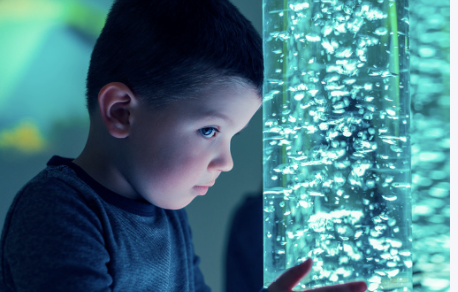We found 17 results that contain "trial 3"
Posted on: #iteachmsu



Posted by
over 4 years ago

The learning unit is a learning experience that results in a learner being able to do something they could not do prior to having the learning experience. This new ability or competency is called Unit Learning Outcome.
https://www.google.com/search?q=Learning+Communities+are+Spaces+to+Explore+Ideas&rlz=1C5GCEA_enLK882LK883&oq=Learning+Communities+are+Spaces+to+Explore+Ideas+&aqs=chrome..69i57j69i59i450l7.218j0j15&sourceid=chrome&ie=UTF-8
One of the key elements in designing this learning unit is to apply the constructive alignment principle. This micro-credential shows how to apply the constructive alignment principle when planning a learning unit.
https://www.google.com/search?q=Learning+Communities+are+Spaces+to+Explore+Ideas&rlz=1C5GCEA_enLK882LK883&oq=Learning+Communities+are+Spaces+to+Explore+Ideas+&aqs=chrome..69i57j69i59i450l7.218j0j15&sourceid=chrome&ie=UTF-8
One of the key elements in designing this learning unit is to apply the constructive alignment principle. This micro-credential shows how to apply the constructive alignment principle when planning a learning unit.
Posted on: #iteachmsu



Posted by
over 4 years ago

Critical Component #3: Shared Inquiry and Dialogue
Dialogue is more than conversation. It is also different than debates, in which someone wins and someone loses. Dialogue requires openness to new ideas and collective learning.
Dialogue is more than conversation. It is also different than debates, in which someone wins and someone loses. Dialogue requires openness to new ideas and collective learning.
Posted on: #iteachmsu


Posted by
over 4 years ago
Critical Component #3: Shared Inquiry and Dialogue
Dialogue is more than conversation. It is also different than debates, in which someone wins and someone loses. Dialogue requires openness to new ideas and collective learning. This is not an easy practice; for students (and teachers) to engage in dialogue, they must build and exercise specific skills:
Dialogue is more than conversation. It is also different than debates, in which someone wins and someone loses. Dialogue requires openness to new ideas and collective learning. This is not an easy practice; for students (and teachers) to engage in dialogue, they must build and exercise specific skills:
Posted on: #iteachmsu


Posted by
over 6 years ago
Reinforcement Learning
Reinforcement learning is a subfield of machine learning in which systems are trained by receiving virtual "rewards" or "punishments," essentially learning by trial and error. Google's DeepMind has used reinforcement learning to beat a human champion in the Go games. Reinforcement learning is also used in video games to improve the gaming experience by providing smarter bot.
One of the most famous algorithms are:
Q-learning
Deep Q network
State-Action-Reward-State-Action (SARSA)
Deep Deterministic Policy Gradient (DDPG)
Reinforcement learning is a subfield of machine learning in which systems are trained by receiving virtual "rewards" or "punishments," essentially learning by trial and error. Google's DeepMind has used reinforcement learning to beat a human champion in the Go games. Reinforcement learning is also used in video games to improve the gaming experience by providing smarter bot.
One of the most famous algorithms are:
Q-learning
Deep Q network
State-Action-Reward-State-Action (SARSA)
Deep Deterministic Policy Gradient (DDPG)
Navigating Context
Posted on: #iteachmsu



Posted by
over 6 years ago

Science and technology is a topic that encompasses science, technology, and the interactions between the two. Science is a systematic enterprise that builds and organizes knowledge in the form of explanations and predictions about nature and the universe. Technology is the collection of techniques, methods or processes used in the production of goods or services or in the accomplishment of objectives, such as scientific investigation, or any other consumer demands.
Science may drive technological development, by generating demand for new instruments to address a scientific question, or by illustrating technical possibilities previously unconsidered. In turn, technology may drive scientific investigation, by creating demand for technological improvements that can only be produced through research, and by raising questions about the underlying principles that a new technology relies on.
For the majority of human history, technological improvements were achieved by chance, trial and error, or spontaneous inspiration. When the modern scientific enterprise matured in the Enlightenment, it primarily concerned itself with basic questions of nature. Research and development directed towards immediate technical application is a relatively recent occurrence, arising with the Industrial Revolution and becoming commonplace in the 20th century.
As academic fields, science and technology are often grouped with engineering and mathematics, as the STEM fields.
Science may drive technological development, by generating demand for new instruments to address a scientific question, or by illustrating technical possibilities previously unconsidered. In turn, technology may drive scientific investigation, by creating demand for technological improvements that can only be produced through research, and by raising questions about the underlying principles that a new technology relies on.
For the majority of human history, technological improvements were achieved by chance, trial and error, or spontaneous inspiration. When the modern scientific enterprise matured in the Enlightenment, it primarily concerned itself with basic questions of nature. Research and development directed towards immediate technical application is a relatively recent occurrence, arising with the Industrial Revolution and becoming commonplace in the 20th century.
As academic fields, science and technology are often grouped with engineering and mathematics, as the STEM fields.
Disciplinary Content
Posted on: #iteachmsu



Posted by
almost 2 years ago

Science & technology is a topic that encompasses science, technology, and the interactions between the two. Science is a systematic enterprise that builds and organizes knowledge in the form of explanations and predictions about nature and the universe. Technology is the collection of techniques, methods or processes used in the production of goods or services or in the accomplishment of objectives, such as scientific investigation, or any other consumer demands.
Science may drive technological development, by generating demand for new instruments to address a scientific question, or by illustrating technical possibilities previously unconsidered. In turn, technology may drive scientific investigation, by creating demand for technological improvements that can only be produced through research, and by raising questions about the underlying principles that a new technology relies on.
For the majority of human history, technological improvements were achieved by chance, trial and error, or spontaneous inspiration. When the modern scientific enterprise matured in the Enlightenment, it primarily concerned itself with basic questions of nature. Research and development directed towards immediate technical application is a relatively recent occurrence, arising with the Industrial Revolution and becoming commonplace in the 20th century.
As academic fields, science and technology are often grouped with engineering and mathematics, as the STEM fields.
Science may drive technological development, by generating demand for new instruments to address a scientific question, or by illustrating technical possibilities previously unconsidered. In turn, technology may drive scientific investigation, by creating demand for technological improvements that can only be produced through research, and by raising questions about the underlying principles that a new technology relies on.
For the majority of human history, technological improvements were achieved by chance, trial and error, or spontaneous inspiration. When the modern scientific enterprise matured in the Enlightenment, it primarily concerned itself with basic questions of nature. Research and development directed towards immediate technical application is a relatively recent occurrence, arising with the Industrial Revolution and becoming commonplace in the 20th century.
As academic fields, science and technology are often grouped with engineering and mathematics, as the STEM fields.
Disciplinary Content
Posted on: #iteachmsu


Posted by
almost 5 years ago
It is now more important than ever for managers and leaders not to ignore the differences between each generation. It is best practice to conduct regular training sessions for all employees and to require managers to attend multi-generational management training.3
Posted on: #iteachmsu


Posted by
almost 5 years ago
Learning a new language this year? This app gets you speaking in just 3 weeks
Anyone can speak a language with Babbel, even if you’re a complete beginner who has never attempted to learn a language before. Here are 5 reasons why there’s nothing holding you back from learning a new language with Babbel.
Anyone can speak a language with Babbel, even if you’re a complete beginner who has never attempted to learn a language before. Here are 5 reasons why there’s nothing holding you back from learning a new language with Babbel.
Assessing Learning
